Armani's iconic advertising campaigns have greatly influenced luxury fashion since the late 1980s. You'll notice a fascinating mix of high-quality visuals and diverse models that embody elegance and sophistication. Celebrities like David Beckham and Rihanna have enhanced the brand's visibility, making it culturally relevant. The campaigns often feature innovative storytelling, using striking black and white imagery to evoke desire. In addition, Armani's commitment to inclusivity and body positivity sets a standard in the industry. As the brand moves forward, it embraces sustainability and new technology, promising even more engaging experiences for you. There's so much more to explore!
Evolution of Armani Campaigns
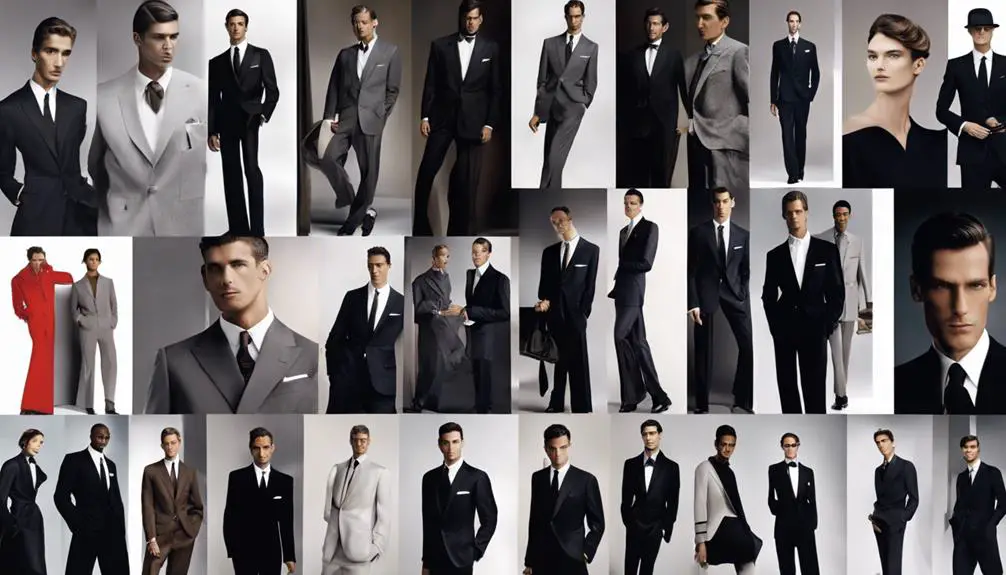
Armani's advertising campaigns have really transformed since they first kicked off in the late 1980s. The Spring/Summer 1988 campaign, designed by Aldo Fallaimale, marked a significant milestone in establishing Armani's brand identity. It showcased bold retro styles that captured attention and laid the groundwork for future campaigns.
As you look back, you'll notice how Armani evolved from these nostalgic visuals to contemporary aesthetics that resonate with today's fashion trends.
Throughout the years, Armani's campaigns have embraced diversity and representation. Models like Karen Elson in 2005 and Du Juan in 2008 not only highlighted the brand's evolution but also enhanced its appeal to a broader audience.
You can see how each campaign carefully reflects the changes in consumer preferences, making Armani relevant and relatable.
The early use of striking black and white imagery created a memorable visual impact, while architectural elements in photography added a modern feel. This combination really helped to differentiate Armani from other luxury brands.
As you explore the timeline of Armani's campaigns, you'll appreciate the consistent innovation in concepts and aesthetics that has established the brand as a leader in luxury fashion marketing.
Celebrity Influence on Armani
Celebrity endorsements have played a fundamental role in shaping the image of Armani, further enhancing its status as a luxury brand. By collaborating with high-profile celebrities like David Beckham and Rihanna, Armani has effectively leveraged their star power to boost brand visibility. These celebrity partnerships not only attract attention but also resonate with diverse consumer bases, creating memorable moments that stick in people's minds.
When you think of Armani, you probably recall those striking advertisements featuring well-known figures. These campaigns have notably increased brand recognition, firmly associating Armani with luxury and sophistication. Notable models like Karen Elson and Du Juan have also graced Armani's campaigns, showcasing the brand's commitment to diverse representation in high fashion. This diversity adds a layer of brand authenticity that resonates with today's consumers.
Moreover, Armani's strategic collaborations with fashion icons keep the brand aligned with current trends and culturally relevant discussions. This approach attracts younger demographics, drawing them into the luxurious world of Armani. Social media plays a vital role here, as influencers and celebrities share their experiences, generating user-generated content that amplifies the brand's reach.
In a world where authenticity matters, Armani's celebrity-driven campaigns create a genuine connection with audiences. By blending luxury with relatable figures, you see how celebrity influence hasn't only shaped the brand's identity but also maintained its ongoing relevance in the competitive fashion landscape.
Visual Aesthetics and Storytelling
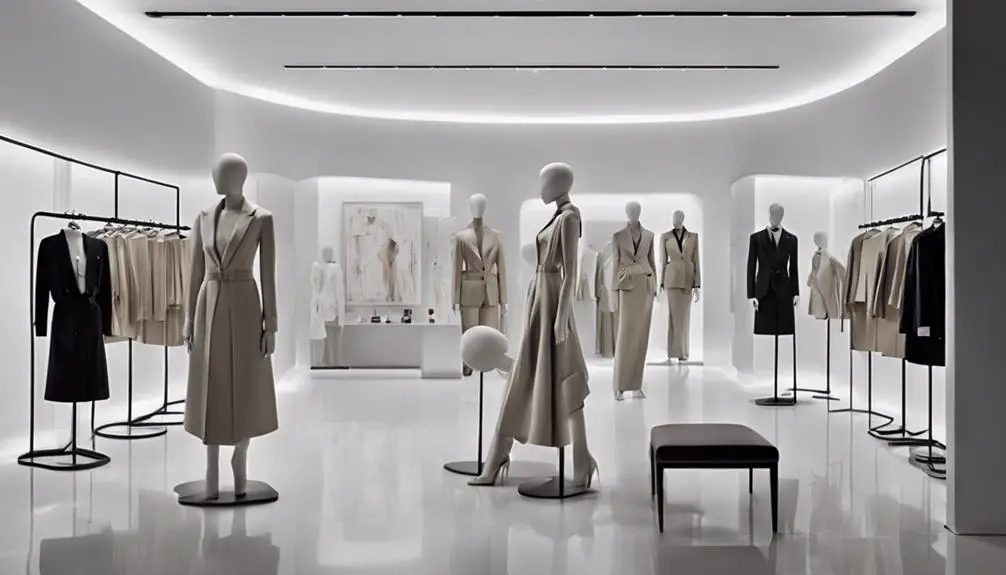
When it comes to luxury fashion, the visual aesthetics and storytelling in advertising campaigns play an essential role in engaging audiences. Armani's campaigns often showcase high-quality black and white imagery, which elevates the brand's elegance and sophistication. This timeless style not only highlights the clothing but also creates a mood that resonates deeply with viewers. You can see how these imagery techniques pull you into a world of luxury and aspiration.
The brand's focus on innovative designs, such as the unstructured jacket that transformed traditional tailoring, also influences the visual narrative of its campaigns, emphasizing comfort and modernity in luxury fashion its pioneering approach to fashion.
In many of Armani's advertisements, the integration of architectural elements adds a modern twist, aligning perfectly with contemporary fashion trends. This clever approach connects the garments to the environment, making the visuals even more striking.
The storytelling in these campaigns is equally compelling; they evoke feelings of desire and aspiration. Each ad feels like a mini-movie, drawing you into its narrative and inviting you to imagine a life filled with luxury.
Moreover, seasonal themes are thoughtfully aligned with current fashion trends, ensuring that each campaign remains relevant and engaging. By featuring diverse and iconic models, Armani not only promotes inclusivity but also enriches its storytelling. Each model brings a unique cultural narrative to the visuals, enhancing the emotional resonance of the brand.
Cultural Impact and Sensitivity
Embracing cultural impact and sensitivity, Armani's advertising campaigns have evolved to resonate with a diverse audience. The brand understands the importance of diversity representation, showcasing models from various backgrounds that challenge traditional gender norms and promote body positivity. This approach not only highlights the beauty of differences but also reflects modern social values, aligning with their innovative marketing strategies that have historically included partnerships with Hollywood and global outreach, especially in Asian markets.
Armani's commitment to vintage identification is also reflected in how they adapt their campaigns to resonate with different cultural contexts.
Armani's commitment to cultural relevance is evident in its strategic avoidance of stereotypes. Instead of relying on outdated clichés, the brand carefully tailors its imagery and messaging to connect with consumers on a deeper level. By adapting campaigns for local markets, Armani enhances its effectiveness, demonstrating an awareness of global cultural dynamics.
Imagine flipping through a magazine and seeing an Armani ad featuring a model who mirrors your own experiences or background. That connection is powerful, making you feel seen and valued. This kind of thoughtful representation fosters a sense of belonging, encouraging you to engage with the brand.
Moreover, by embracing cultural sensitivity, Armani strengthens its relationships with consumers, creating a community that appreciates the brand's efforts to reflect real-world diversity. This focus on inclusivity not only boosts brand loyalty but also influences the fashion industry, urging other brands to follow suit.
In a world where representation matters, Armani's campaigns stand out as a shining example of how fashion can embrace cultural impact and sensitivity, making waves across various markets and leaving a lasting impression on audiences everywhere.
Future Directions in Advertising
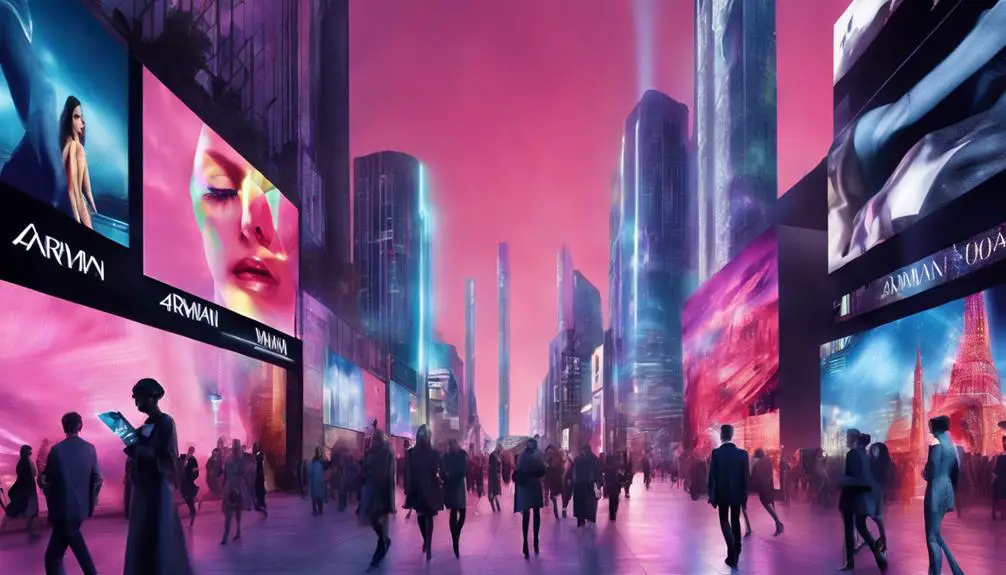
As consumers increasingly prioritize sustainability and ethical practices, Armani's future advertising strategies are set to reflect these evolving values. You can expect a stronger focus on sustainability initiatives, showcasing the brand's commitment to the environment.
As people become more aware of their purchasing power, Armani will likely highlight eco-friendly materials and ethical production processes in its campaigns.
Moreover, the integration of AI personalization will revolutionize how you interact with the brand. By utilizing advanced algorithms, Armani will tailor advertising to your unique preferences, making each encounter feel more relevant and personal.
Imagine receiving recommendations based on your style and interests, enhancing your shopping experience.
In addition to these technological advancements, Armani is anticipated to embrace diversity and inclusion in its visual representation. You'll see more authentic portrayals of different cultures, body types, and identities in their campaigns, aligning with society's call for varied representations in fashion.
Innovations in immersive experiences, like augmented reality, are also on the horizon. You could engage with the brand in exciting new ways, such as virtually trying on outfits or exploring collections in 3D.
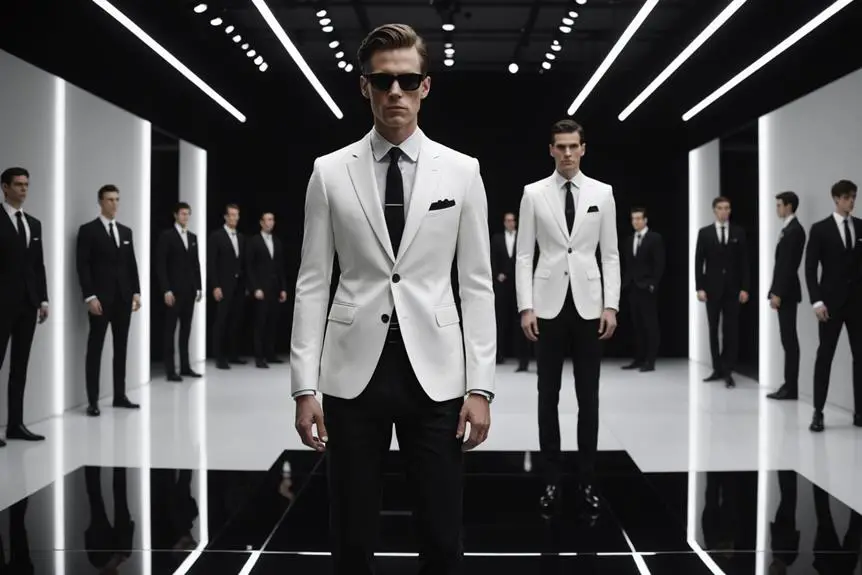


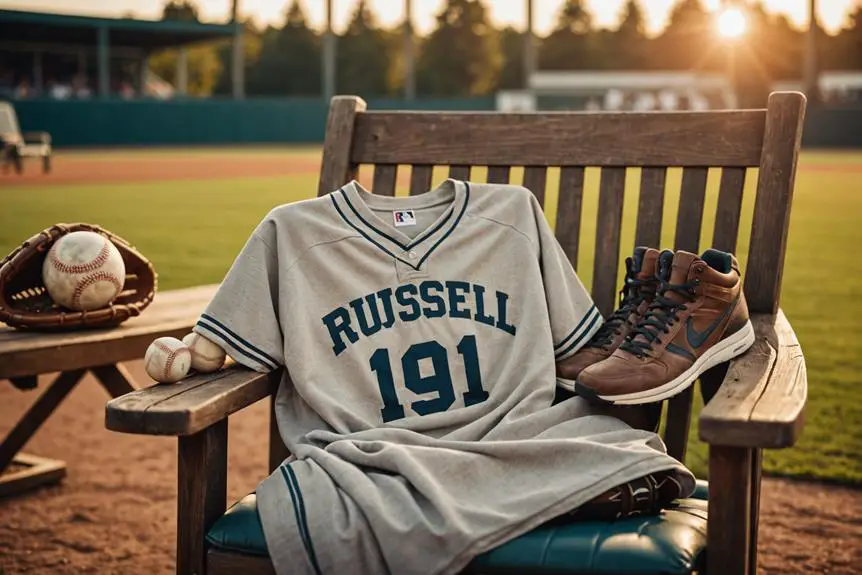
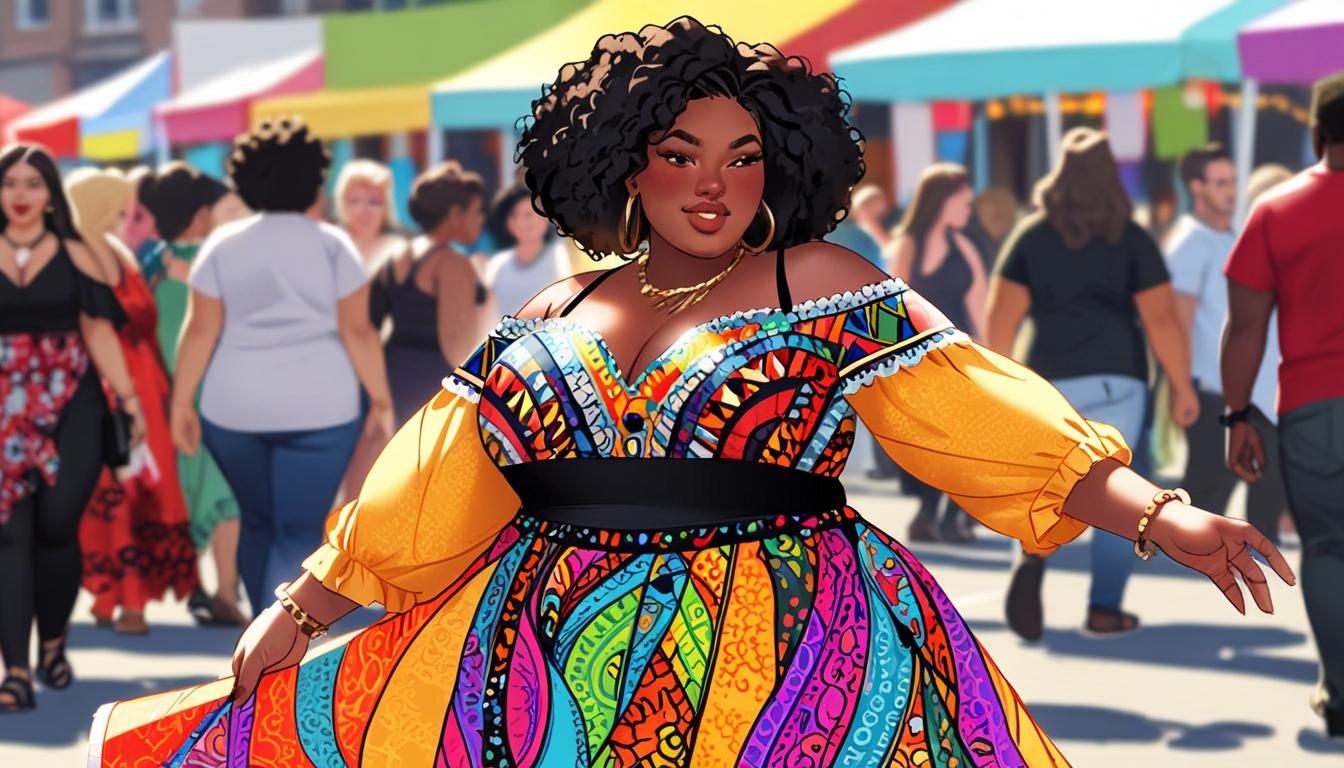
Plunge into the vast realm of EVE Online. Test your limits today. Explore alongside thousands of players worldwide. [url=https://www.eveonline.com/signup?invc=46758c20-63e3-4816-aa0e-f91cff26ade4]Download free[/url]